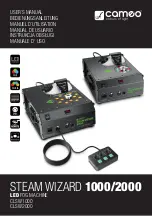Reviews:
No comments
Related manuals for 888-H70

STEAM WIZARD 1000
Brand: Cameo Pages: 30

BDS 43/Duo C
Brand: Kärcher Pages: 9

VN1715
Brand: Viper Pages: 9

Sensor Mono
Brand: Babolat Pages: 28

DIVERSE 7450
Brand: BT Pages: 2

GBC WireBind W18
Brand: GBC Pages: 38

TFX-1032
Brand: Radio Shack Pages: 36

714XA A-2-P-1
Brand: Baum Pages: 49

AMS-221EN-HS3020/7200
Brand: JUKI Pages: 70

P Series
Brand: Crane Pages: 11

TF MEGA-M
Brand: Hefter Systemform Pages: 80

SC 7900-02 M6 A
Brand: SunStar Pages: 47

FAX 940
Brand: Triumph Adler Pages: 110

CC2700
Brand: Yamato Pages: 15

VG Series
Brand: Yamato Pages: 36

VC2790G-8F class
Brand: Yamato Pages: 48

Creeper AQ
Brand: Showven Pages: 12

PAC 400
Brand: Galaxy Pages: 2

















